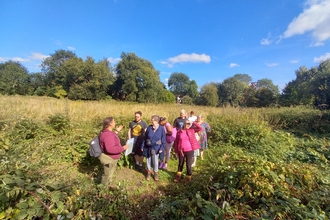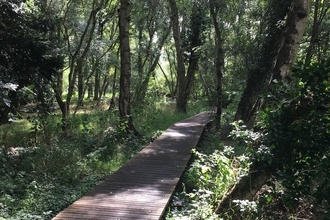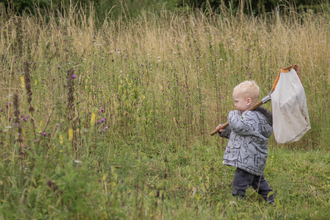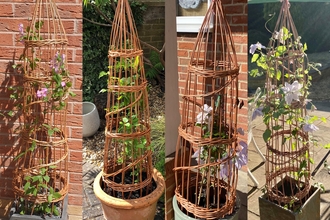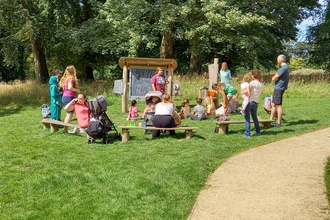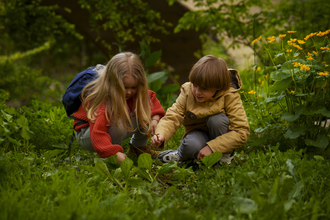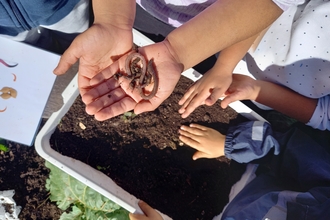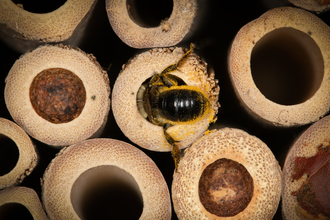Winter is a season for adventurers, for those willing to brave the cold weather to explore wild places for special wildlife experiences. Without leaves on the trees it can be much easier to spot species. Winter weather can also reduce human footfall leaving wild places quieter and more amenable to wildlife watching.
Wildlife in Winter
Red fox, vixen in the snow - Danny Tippling/2020 Vision
Small birds
However cold you feel in winter spare a thought for small birds. Their tiny bodies struggle for warmth and need to be constantly supplied with energy to stay alive. Bird feeders can literally be a lifesaver. Please consider buying your bird food from Vine House Farm, who make a donation to the Wildlife Trusts with each purchase.
Many small birds gather together in flocks for warmth and safety. If you walk along a woodland edge or hedgerow in winter you may encounter flocks of long-tailed tits flittering through the branches. Sometimes they can be part of a mixed flock with other birds like blue tits, great tits, coal tits and goldcrests. Flocking together means more eyes watching for danger and searching for food.
Watching the dynamics of these small flocks as they flutter and chirp their way through the branches of the forest edge can be a mesmerising experience, especially as they can be only metres away from you!
Hardwick wood
The Winter Forest
There are many other reasons for visiting woodlands in winter, especially in the early morning when cold mists give them a mystical quality. At this time of day you're more likely to see wild animals like foxes and deers. Of course the reduced foliage also means it's easier for wildlife to see you, so quietness and good fieldcraft are key. Wet mud and snow can reveal footprints, helping you asses what species may be present.
Few wildlife encounters can be as engaging as catching a glimpse of a roe deer in the misty morning light of the winter forest. As wonderful as they are, deer can also be controversial. For many people they evoke a powerful sense of the wild but from a management point of view deer overpopulation is having serious effects on woodland flora, such as the decline of spring oxlips, which is why the Wildlife Trust BCN and other organisations use methods like deer fences to protect vulnerable habitats.
Identifying trees is more challenging in winter without leaves and blossom but the fractal patterns of tree branches are much more apparent, allowing us to appreciate their form and structure more keenly. Hazel catkins are one of the first flowers to appear on the bare branches. Catkins are the male flowers and are easily spotted. If you get closer to the tree, you may be able to find the miniscule female flowers, which look like deep pinky-red tentacles emerging from a bud.
Top places to visit: Brampton Wood, Old Sulehay, West Cambridgeshire Hundreds, Rockingham Forest
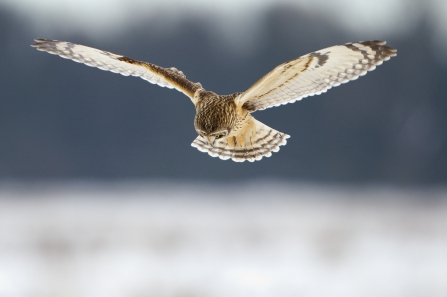
| Danny Green/2020VISION |
Birds of Prey
Winter can be a great time of year to look for birds of prey. Some species of raptors and owls, such as marsh harriers or long-eared owls, may come together to form collective winter roosts. Others, such as peregrine falcons and merlins, take advantage of flocking waders and water birds arriving at favoured wetland habitats and can be seen hunting in the open.
Top places to visit: Great Fen, Grafham Water, Ouse Washes
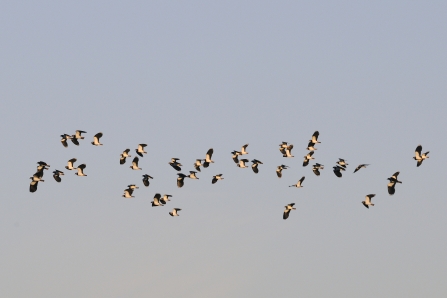
Nick Upton/2020VISION
Winter waders
The winter may feel chilly to us, but for waders nesting in the Arctic, the UK is positively balmy. Every autumn the tundra wastes and taiga boglands empty, and wading birds head for our food-rich wetlands in astounding numbers: Over half a million lapwings from across northern Europe, half a million dunlin from Scandinavia, 300,000 knot from northern Canada, 300,000 oystercatchers from Iceland and Norway, 60,000 bar-tailed godwits from north west Russia, 50,000 Icelandic redshanks, and 40,000 grey plovers from the Arctic join local birds, bickering and jostling for space on our mudflats.
Top places to visit: Ouse Washes, Pitsford Water, Summer Leys, Nene Wetlands, Godmanchester.
David Price
Winter flowers
Winter aconites and snowdrops are some of the most cheerful sightings in the bleak midwinter, evoking the first stirrings of spring and the magic of new life. They may not be native but their carpets of yellow-gold and pure snow white are a joyful and uplifting sight.
"The Snowdrop, in purest white array, First rears her head on Candlemas day."
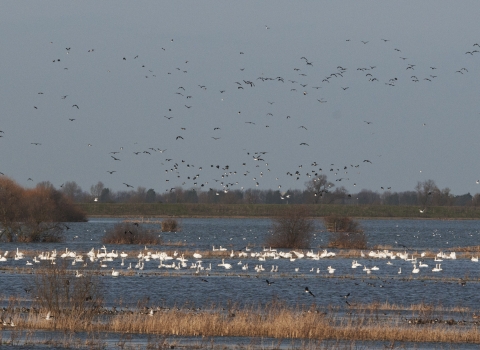
Wildfowl at Ouse Washes NR - Bob Parker
Ouse Washes
The Ouse Washes is a huge area of washland home to thousands of wintering ducks and breeding waders. Bleak, remote and windswept it can evoke a sense of wild fenland like few other places. For those willing to make the journey and find this place it can provide an amazing wildlife experience.


